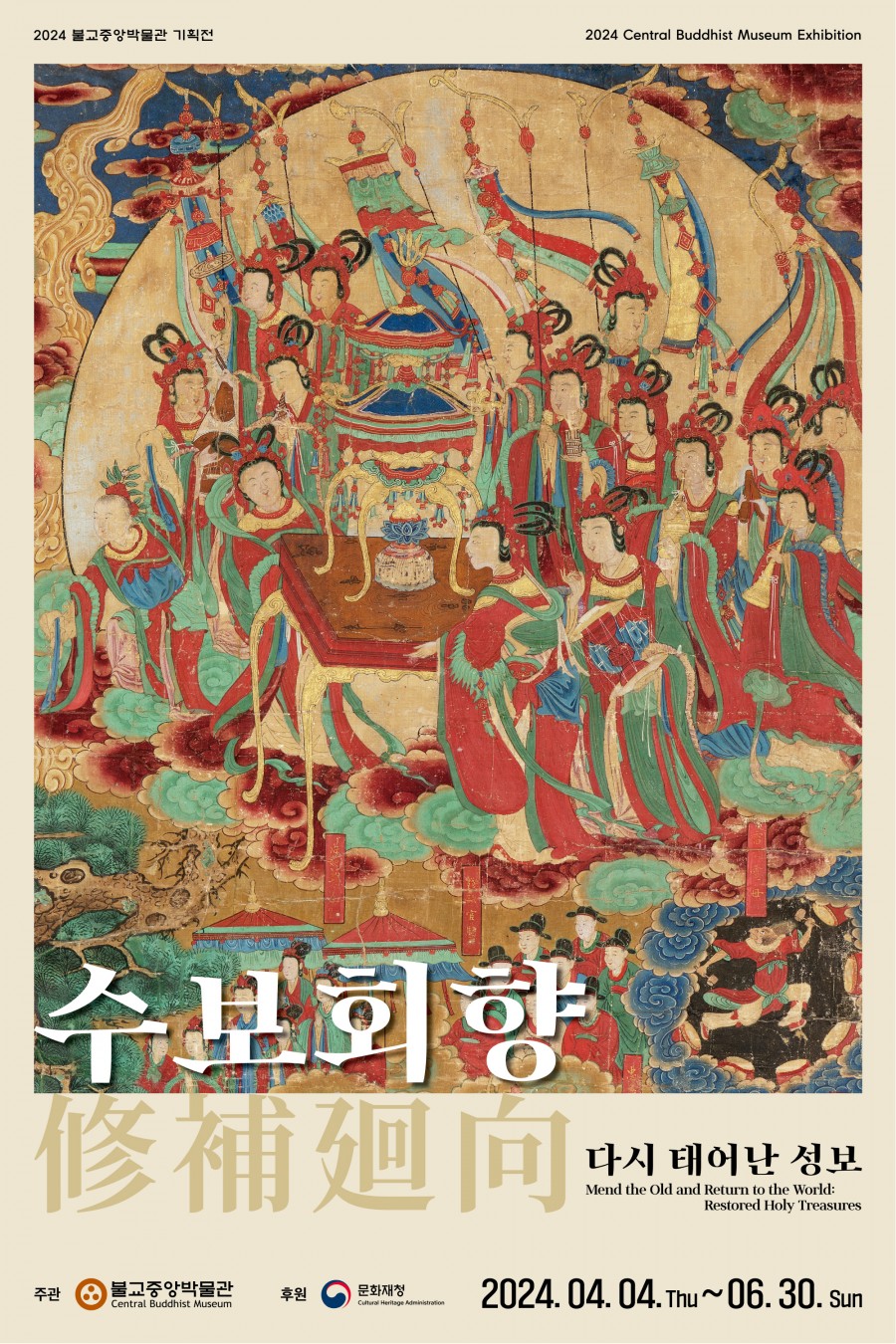The worship of Tejaprabha Buddha originates from the Navagraha, a form of Hindu astrology that involves nine heavenly bodies and deities.
Tejaprabha Buddha is depicted in a crossed-legged position facing forward, on a lotus seat atop a hexagonal base with short legs. The Buddha has a circular nimbus around his head and body. His right hand is raised to form a mudra, while his left hand is lowered below his stomach but holds no golden chakra.
Pagye-sa Temple’s Painting of Tejaprabha Buddha is the oldest painting of its kind in Gyeongsang-do Province. Although it was originally composed of eleven panels until 1974, unfortunately only one panel remains today due to theft, as reported in a 1987 study. The remaining panel is currently located at Seongjeon-am Hermitage, a branch temple of Pagye-sa.

Meaning of Soo-bo-hoe-hyang, Original Faces Restored
Buddhist treasures are, spiritual as they may be, still made of matter. Various materials were
used such as wood, clay, paper, and silk, and they have finite physical properties. Therefore,
they are inevitably damaged over time, sometimes even to the point of destruction. The causes
of damage can vary, ranging from physical, such as breakage, to biological, such as vermin
and insects. A treasure that has suffered any damage, large or small, slowly loses its original
face, though exquisite at the time of its creation. There are many examples of holy treasures
that have been damaged to such an extent that even their function as objects of worship was
forfeited.
Scriptures and paintings are among the most vulnerable and account for the majority of the
damaged heritage. They are often torn or bent by theft, stripped of pigment, deteriorated by
age, and faded by pollution or exposure to the elements. Most tragic of all are the cases where
they were deprived of their original faces due to further damages from improper preservation
measures applied in the past.
To solve this situation, Korea began to repair and restore many historic artifacts with
high cultural value based on scientific methodology in the 1960s. Conservation science
is still evolving, and state-of-the-art substances and tools specifically chosen to match
the characteristics of materials and the conditions of deterioration are applied with the
development of cutting-edge analysis methods. Moreover, while Korea had to rely heavily on
the expertise of Japanese specialists in the past, it has now secured homegrown capabilities,
with many skilled and experienced experts being cultivated. The accumulated research results
of humanistic studies are also contributing to the recovery of the treasures that lost their
original faces. Under these conditions, countless people are joining in and making their best
efforts to restore the true face of the sacred treasures.




